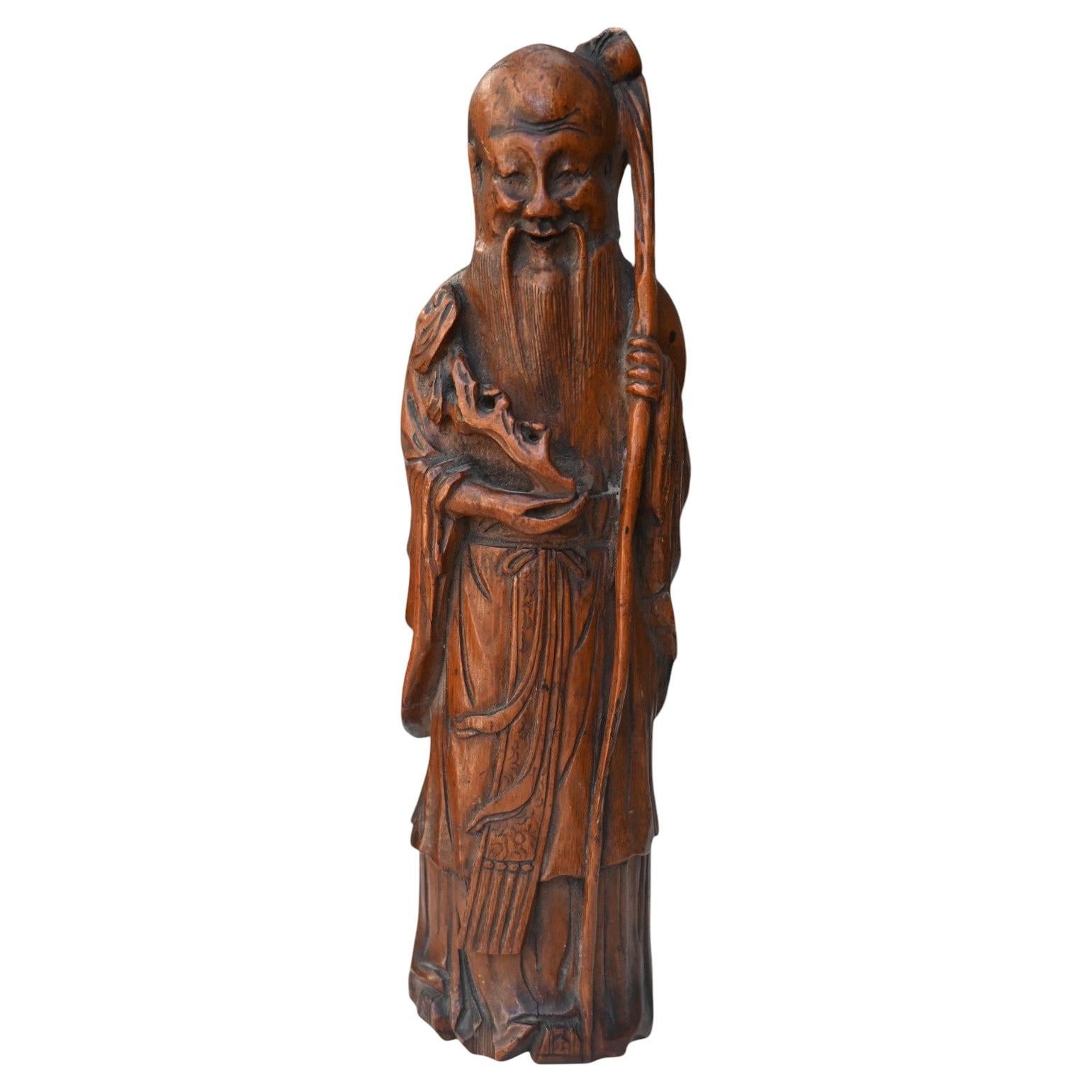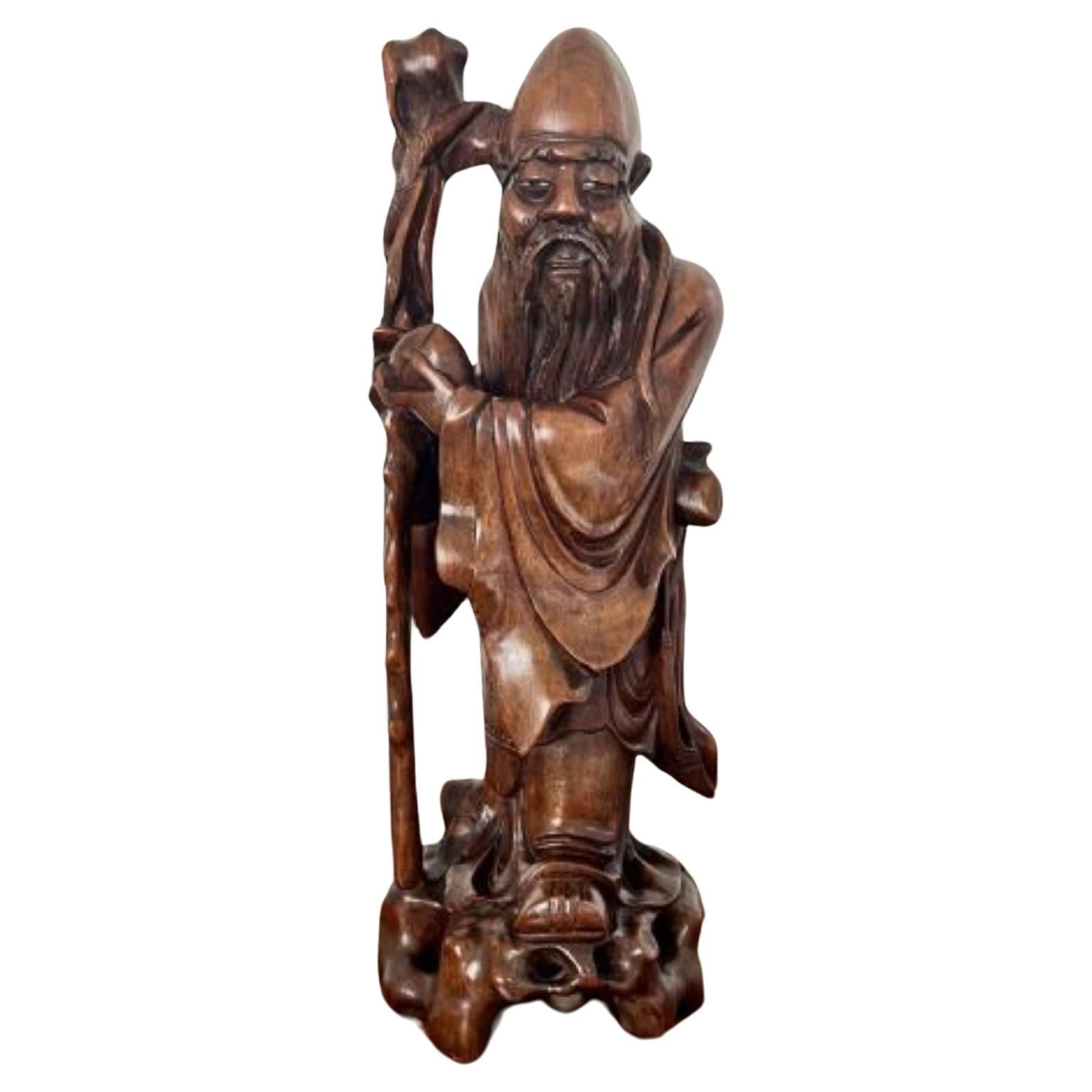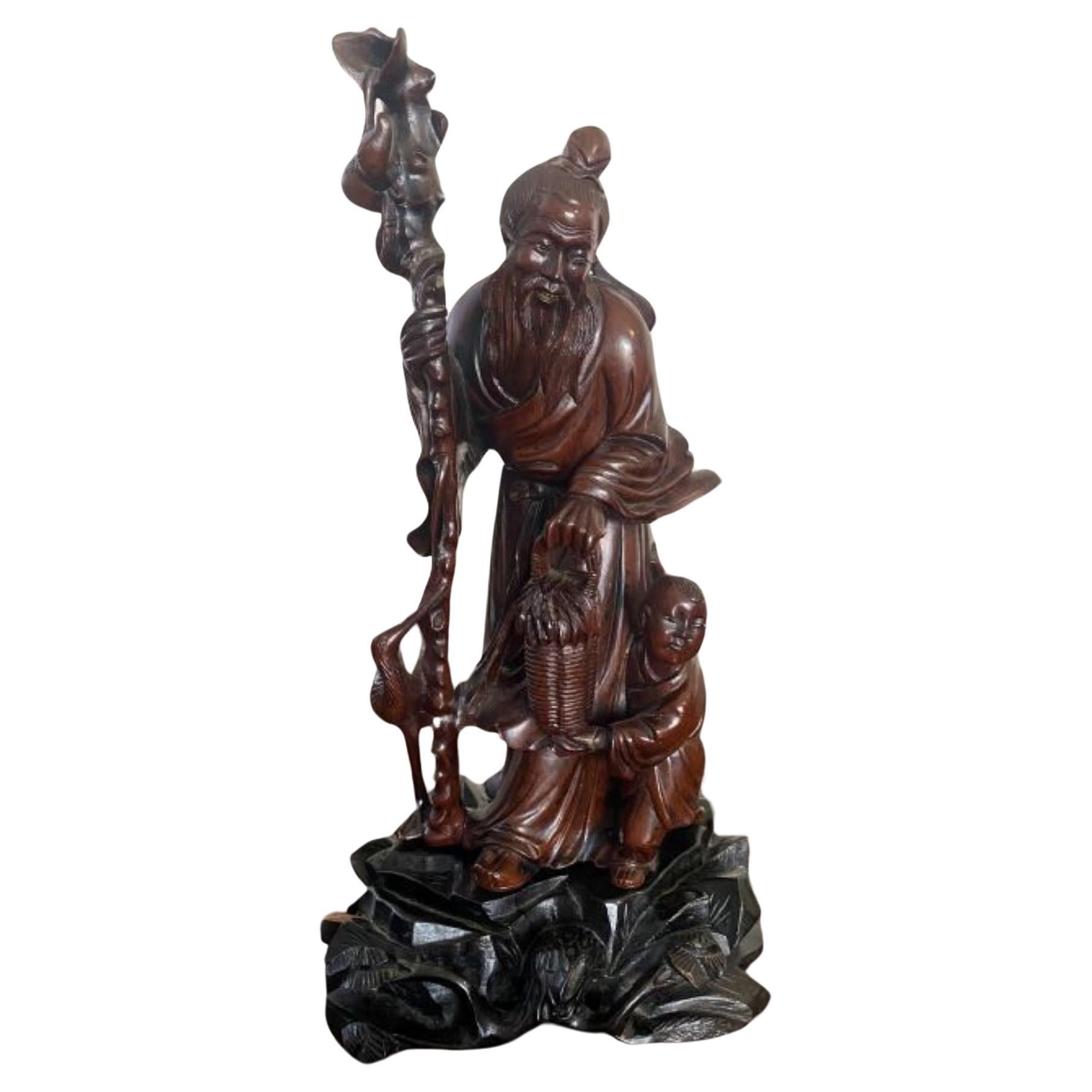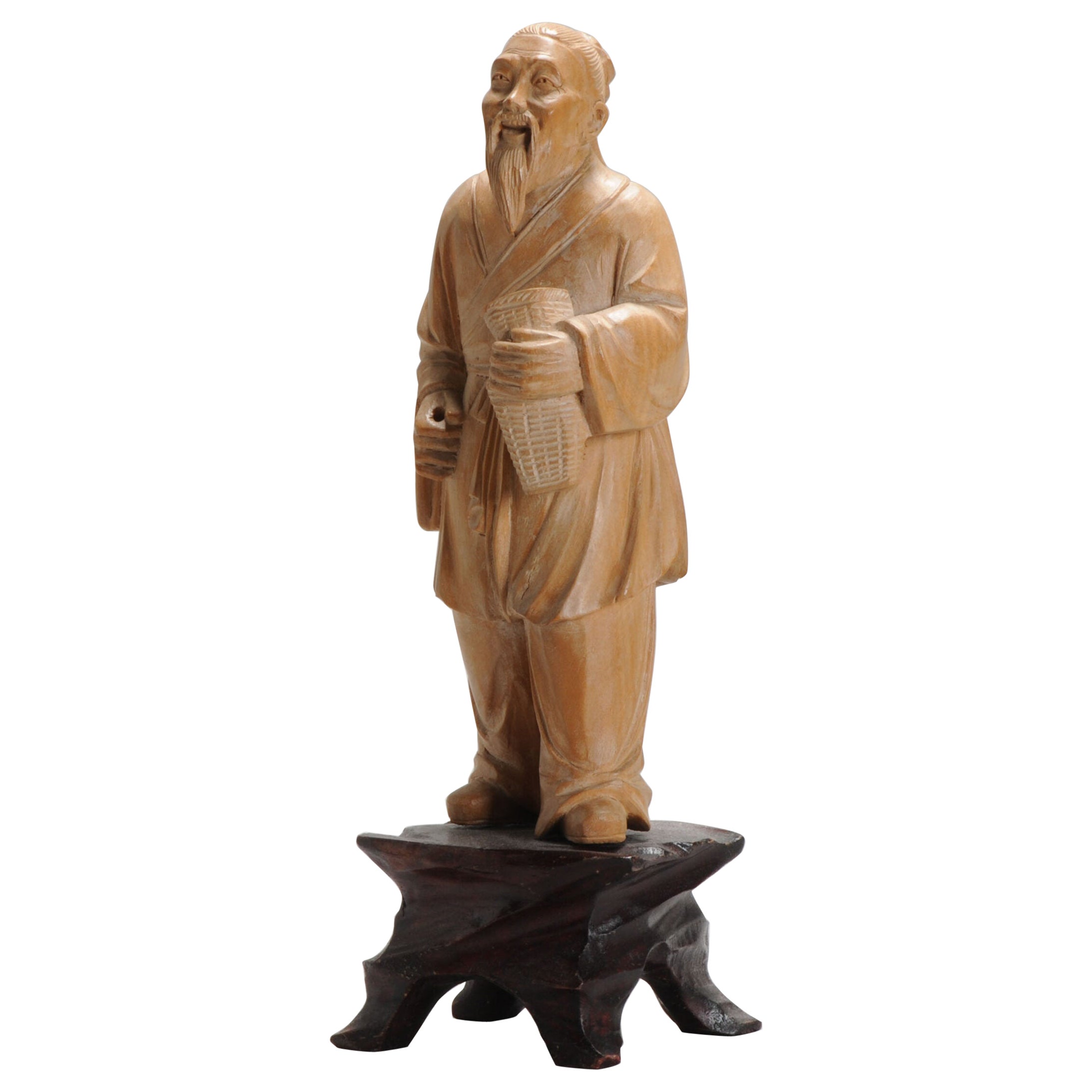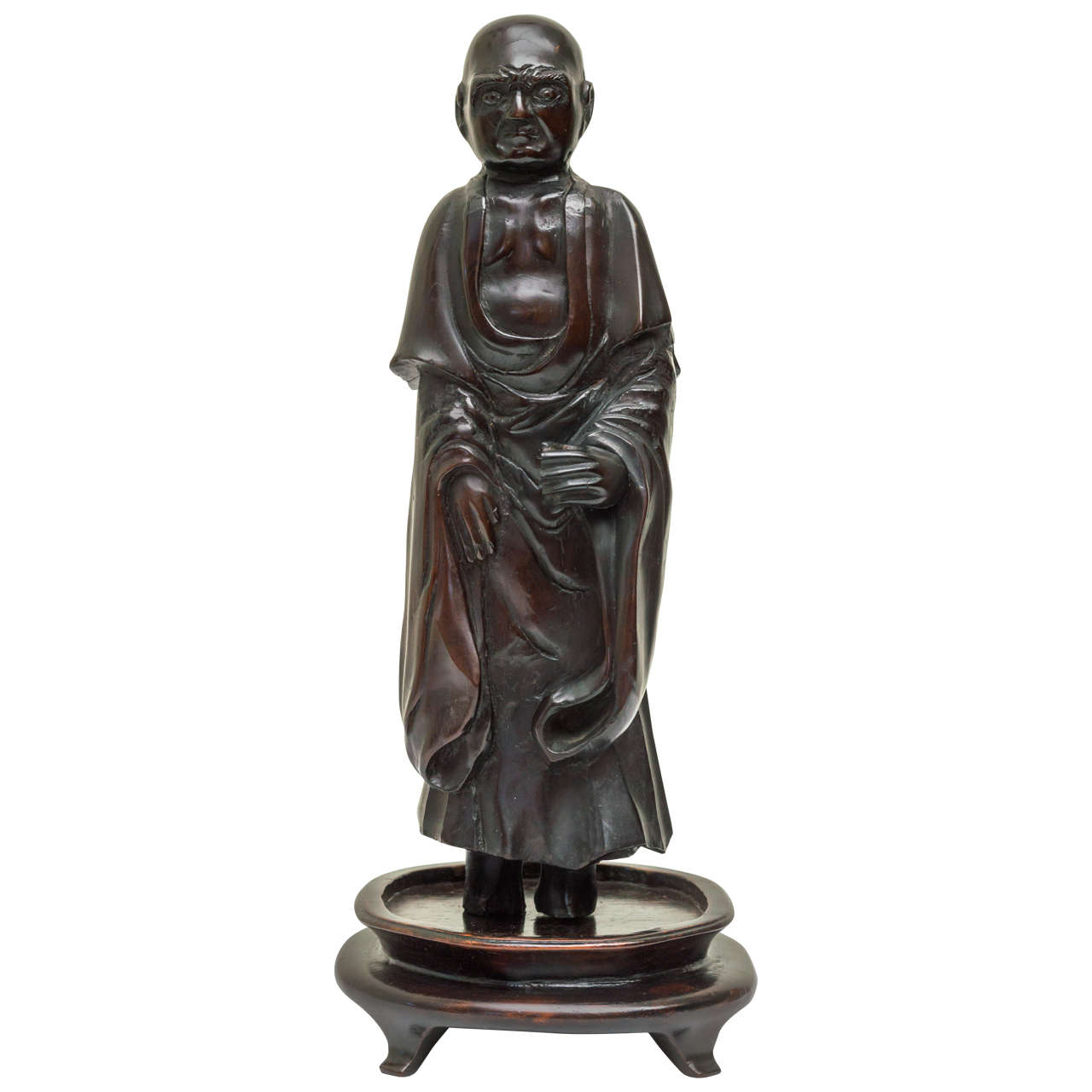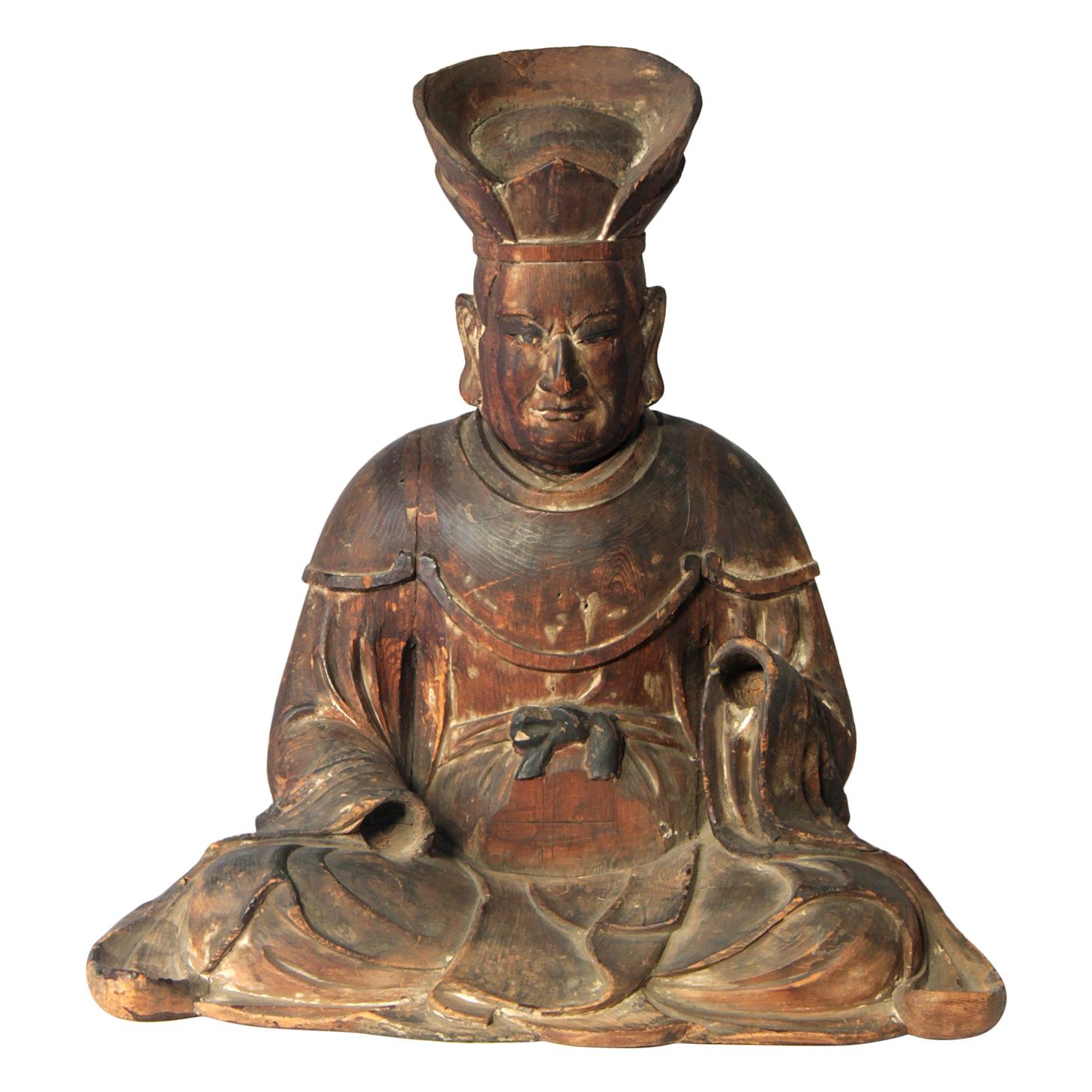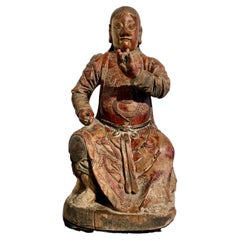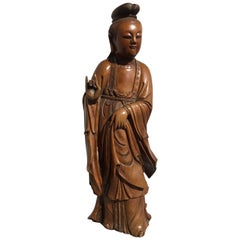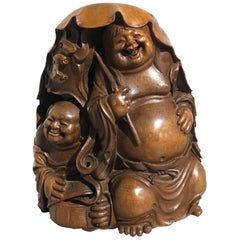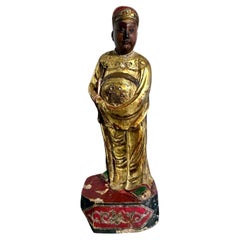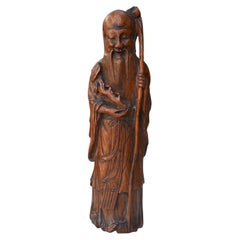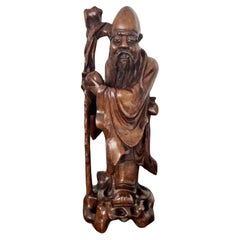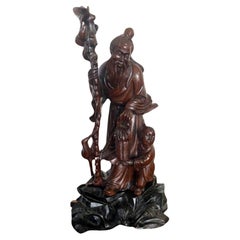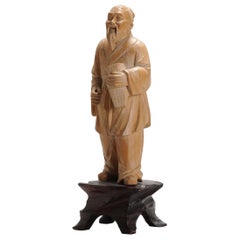Items Similar to Chinese Carved Bamboo Figure of a Sage, Qing Dynasty, 18th Century
Want more images or videos?
Request additional images or videos from the seller
1 of 11
Chinese Carved Bamboo Figure of a Sage, Qing Dynasty, 18th Century
$22,500
£17,178.65
€19,849.78
CA$31,585.74
A$35,205.60
CHF 18,471.17
MX$429,917.76
NOK 233,885.17
SEK 221,057.06
DKK 148,147.53
About the Item
A sweet and lovely Chinese bamboo carving of the sage Dongfang Shuo, mid-Qing dynasty, 18th century, China.
Well carved form a single section of bamboo, the carving depicts the historical Han dynasty figure Dongfang Shuo. The sage, scholar, court jester, and later, Taoist transcendent, wears a knowing smile on his face, his long hair tied into a neat topknot, his long beard falling gracefully.
Dongfang Shuo is portrayed as a sage, seated upon a rocky outcrop, dressed in loose robes and sandals, holding a basket overflowing with lingzhi (the fungus of immortality) in one hand, clutching the sash of his robe in the other. At his back are a double gourd flask (a symbol often associated with Taoist sages), and a long handled axe.
The bamboo with a lovely and warm, dark reddish brown patina.
For a very similar example, please see lot 3025 of Sothebys Hong Kong April 7, 2015 sale, as well as Christie's Hong Kong December 3, 2008 sale, lot 2324.
- Dimensions:Height: 6 in (15.24 cm)Width: 5 in (12.7 cm)Depth: 4.82 in (12.25 cm)
- Style:Qing (Of the Period)
- Materials and Techniques:
- Place of Origin:
- Period:
- Date of Manufacture:19th Century
- Condition:Wear consistent with age and use. In fine condition, with some dust accumulation to the crevices. The bamboo seemingly with some holes plugged during the carving. Please see photos.
- Seller Location:Austin, TX
- Reference Number:1stDibs: LU894711158401
About the Seller
5.0
Platinum Seller
Premium sellers with a 4.7+ rating and 24-hour response times
Established in 2001
1stDibs seller since 2010
345 sales on 1stDibs
Typical response time: <1 hour
- ShippingRetrieving quote...Shipping from: Austin, TX
- Return Policy
Authenticity Guarantee
In the unlikely event there’s an issue with an item’s authenticity, contact us within 1 year for a full refund. DetailsMoney-Back Guarantee
If your item is not as described, is damaged in transit, or does not arrive, contact us within 7 days for a full refund. Details24-Hour Cancellation
You have a 24-hour grace period in which to reconsider your purchase, with no questions asked.Vetted Professional Sellers
Our world-class sellers must adhere to strict standards for service and quality, maintaining the integrity of our listings.Price-Match Guarantee
If you find that a seller listed the same item for a lower price elsewhere, we’ll match it.Trusted Global Delivery
Our best-in-class carrier network provides specialized shipping options worldwide, including custom delivery.More From This Seller
View AllChinese Carved and Lacquered Figure of Zhenwu, Qing Dynasty, 19th century, China
Located in Austin, TX
A powerful Chinese figure of the Taoist diety Zhenwu (Xuanwu), carved and lacquered wood with applied lacquer details, Qing Dynasty, 19th century or earlier, China.
Zhenwu, also kno...
Category
Antique 19th Century Chinese Qing Sculptures and Carvings
Materials
Wood, Hardwood
Chinese Carved Boxwood Figure of Guanyin, Mid-Qing Dynasty
Located in Austin, TX
A sublime Chinese carved boxwood figure of the Bodhisattva of Compassion, Avalokiteshvara, called Guanyin in Chinese, mid-Qing dynasty.
The an...
Category
Antique Late 18th Century Chinese Qing Sculptures and Carvings
Materials
Boxwood
Chinese Qing Dynasty Carved Bamboo HeHe ErXian Group, 19th Century
Located in Austin, TX
A wonderful Chinese bamboo figural carving featuring the Taoist immortal twins of eternal youth, known as the HeHe ErXian, Qing dynasty, 19th century.
F...
Category
Antique 19th Century Chinese Qing Sculptures and Carvings
Materials
Bamboo
Chinese Taoist Figure of Wenchang, Late Qing Dynasty, c. 1900, China
Located in Austin, TX
A tall and impressive figure of the Taoist deity Wenchang Wang, carved, gessoed, lacquered, gilt and polychromed wood, Late Qing Dynasty, circa 1900, Fujian, China.
Wenchang, the T...
Category
Antique Early 1900s Chinese Qing Sculptures and Carvings
Materials
Wood
Chinese Carved Zitan Figure of a Bodhisattva, Qing Dynasty
Located in Austin, TX
A finely carved Chinese zitan wood figure of an unidentified bodhisattva, possibly Guanyin, late Qing Dynasty, circa 1900, China.
The androgynous figure has a plump, almost matronly face, with downcast eyes and a gentle smile. The hair in long tresses, gathered and tied in a high chignon.
The enlightened being is portrayed seated in dhyanasana, bare feet resting on crossed legs, both soles pointing up.
Thick robes billow and drape around the full figured body. The hands display...
Category
Early 20th Century Chinese Qing Sculptures and Carvings
Materials
Lapis Lazuli
Chinese Carved Wood Bodhisattva Guanyin, Late Ming Dynasty, 17th Century
Located in Austin, TX
An attractive carved wood figure of the Bodhisattva Avalokiteshvara, known as Guanyin in China, late Ming Dynasty, early 17th century, China.
Guanyi...
Category
Antique Early 17th Century Chinese Ming Sculptures and Carvings
Materials
Gesso, Wood
You May Also Like
Ancient Chinese Qing Dynasty Carved Bamboo Statue from a Sage
Located in Bilzen, BE
A finely carved Bamboo representing a sage Chinese Qing Dynasty, 19th century
Good condition as shown in the photos Height 25.5 cm
Beautiful aged patina
Category
Antique 19th Century Chinese Qing Sculptures and Carvings
Materials
Bamboo
Fine quality large antique Chinese carved hardwood figure
Located in Ipswich, GB
Fine quality large antique Chinese carved hardwood figure having a fine quality antique Chinese hardwood figure of a sage.
Category
20th Century Chinese Sculptures and Carvings
Materials
Hardwood
Quality antique Chinese carved hardwood figure
Located in Ipswich, GB
Quality antique Chinese carved hardwood figure of a shoulou with a staff, attendant child and a stork standing on a carved base
Category
Early 20th Century Chinese Sculptures and Carvings
Materials
Hardwood
Fine Chinese Carved Wood Statue of Man Chinese Antique, ca 1900
Located in Amsterdam, Noord Holland
Ca 1900 Fine Chinese Carved Wood Statue of a Man CHinese Antique.
China, finely carved wooden statue.
Additional information:
Material: Wood / Bamboo
Region of Origin: China
Period...
Category
Antique 19th Century Chinese Qing Figurative Sculptures
Materials
Wood
Early 18th Century Chinese Qing Period Carved Lohan Figure
Located in San Francisco, CA
Early 18th century Chinese Qing period carved Lohan figure in draped robes. Very finely carved heavy dark rosewood. The aged surface patina with tight gra...
Category
Antique Early 18th Century Chinese Qing Sculptures
Materials
Rosewood
18th Century Chinese Wooden Figure 'Wanli'
Located in Esbeek, NL
18th century Chinese wooden figure, depicted Wanli.
See old sticker on the back of the figure, see picture.
Category
Antique 18th Century Chinese Sculptures and Carvings
Materials
Wood
More Ways To Browse
Mid Century Asian Carved
Antique Sage
Hand Carved Asian Figure
Chinese Qing Figure
Dress Form Mid Century
Hand Axe
Chinese Taoist
Chinese Seated Figure
Chinese Hand Carved Bamboo
Qing Dynasty Robe
Chinese Bamboo Baskets
Carved Gourds
Chinese Bamboo Carving
Taoist Art
Antique Chinese Bamboo Basket
Antique Jester
Hand Carved Hong Kong Furniture
Han Dynasty Figure
